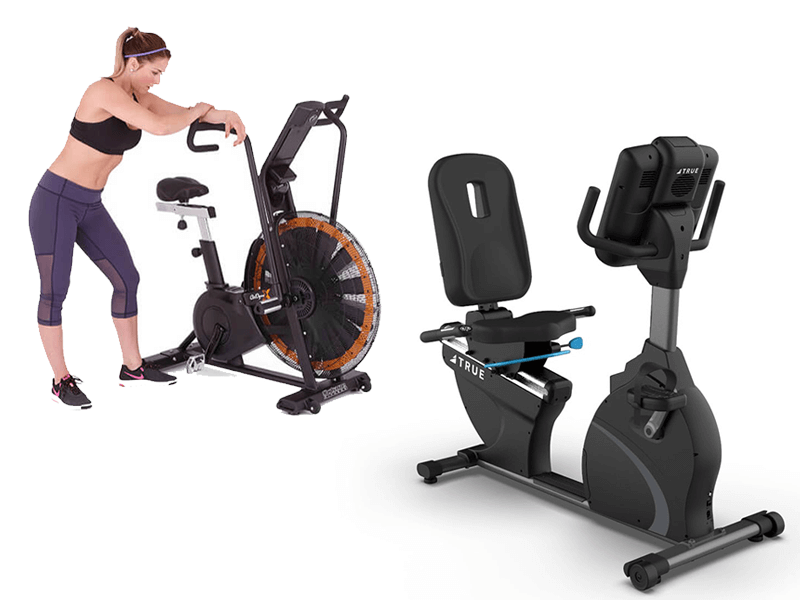
When it comes to upright bike versus recumbent bikes both have become popular pieces of exercise equipment in home gyms. They are both a safe and effective way to get in a low-impact workout.
Upright exercise bikes and recumbent bikes are both popular options for indoor cycling workouts, but they have distinct differences in design, comfort, and the muscles they engage. Here’s a comparison:
Upright Exercise Bike
Design and Positioning:
- Seating: The seat is small and positioned directly above the pedals.
- Handlebars: Located in front of the rider, similar to a traditional outdoor bicycle.
- Posture: The rider sits upright or slightly leaned forward, similar to a road bike.
Comfort:
- The seat can be less comfortable, especially during long workouts, due to its smaller size.
- Less support for the back, which might be an issue for people with lower back problems.
Muscle Engagement:
- Gives a more intense workout, primarily targets the quadriceps, hamstrings, calves, and glutes.
- Engages the core and upper body muscles for balance and support during the workout.
Workout Intensity:
- Can offer a more intense workout as it allows for standing up and pedaling, which increases the cardiovascular demand.
- Suitable for high-intensity interval training (HIIT) and simulating outdoor cycling conditions.
Weight Loss and Calorie Burning:
- The upright bike has an edge over the recumbent bike here due to a more intense workout and the additional muscles used.
Space Requirements:
- Typically more compact and takes up less floor space.
Recumbent Bikes
Design and Positioning:
- Seating: Features a larger, chair-like seat with a backrest.
- Handlebars: Positioned at the sides of the seat or in front, depending on the model.
- Posture: The rider sits in a reclined position with the pedals in front of them.
Comfort:
- More comfortable for longer sessions due to the larger seat and back support.
Impact on Joints:
- Because of the reclined seating position and larger seat it is easier on the lower back and joints and reduces the pressure on the spine and hips. This makes it suitable for people with back issues or those recovering from injuries, seniors, or individuals with joint issues.
Muscle Engagement:
- Primarily targets the lower body muscles, including the quadriceps, hamstrings, and glutes.
- Less engagement of the upper body and core muscles compared to an upright bike.
Workout Intensity:
- Provides a lower impact workout, which can be easier on the joints.
- Generally less intense than an upright bike, but still effective for cardiovascular fitness and lower body strength.
Space Requirements:
- Usually larger and takes up more floor space due to its extended design.
Summary
Upright Exercise Bikes: More closely mimic outdoor cycling, offer more intense workouts, and engage more muscle groups, but may be less comfortable for longer rides.
Recumbent Bikes: Provide a more comfortable, lower-impact workout, with greater support for the back, making them suitable for longer sessions and for individuals with joint or back issues.
Choosing between the two depends on your fitness goals, comfort preferences, and any physical limitations you might have.
